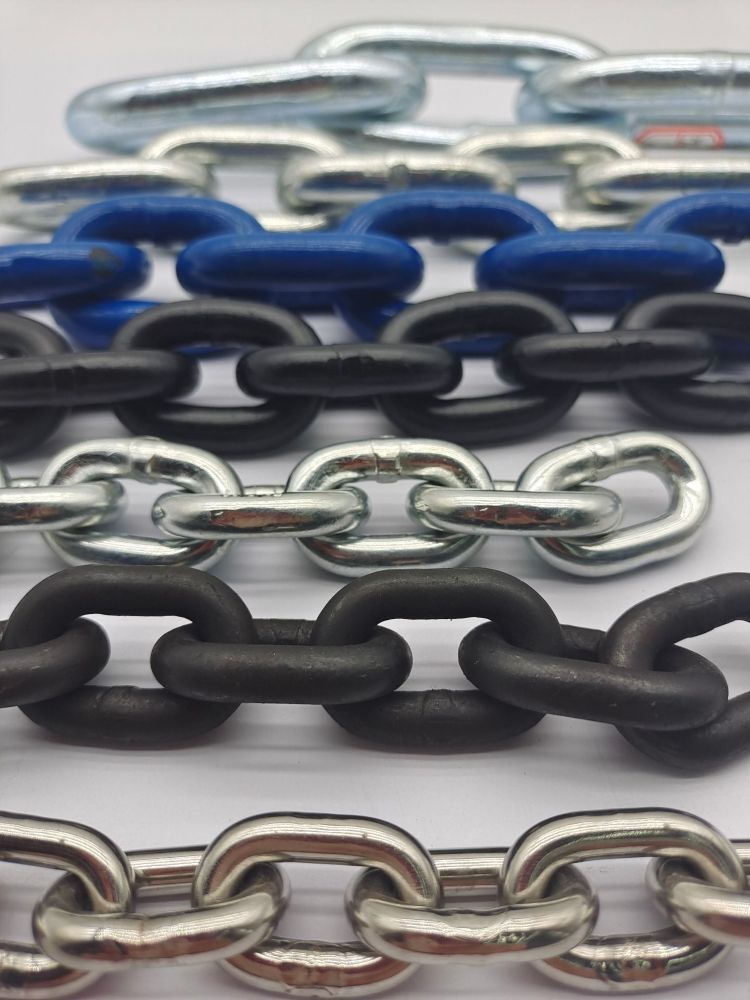Lifting chains are often marked with specific grades to indicate their strength and suitability for various lifting applications. The grade markings provide information about the chain's material, working load limit (WLL), and other relevant specifications. Here are some common grade markings you may come across:
Grade 30: This is a general-purpose, low-strength lifting chain. It is typically marked with "G30" or "Grade 30" and is suitable for light to moderate lifting applications. Grade 30 chains are commonly used in agriculture, construction, and general-purpose lifting.
Grade 43: Also known as high-test chain, Grade 43 chains offer higher strength than Grade 30 chains. They are marked with "G43" or "Grade 43" and are suitable for heavier lifting applications. Grade 43 chains are commonly used in transportation, towing, and logging industries.
Grade 70: Grade 70 chains, marked with "G70" or "Grade 70," are high-strength chains designed for heavy-duty lifting and transport applications. They have a higher working load limit compared to Grade 30 and Grade 43 chains. Grade 70 chains are commonly used in the transportation and trucking industry for securing heavy loads.
Grade 80: Grade 80 chains are alloy steel chains that offer even higher strength and durability than Grade 70 chains. They are commonly marked with "G80" or "Grade 80" and are suitable for demanding lifting applications where a higher working load limit is required. Grade 80 chains are often used in construction, mining, and industrial settings.
Grade 100: Grade 100 chains are the strongest lifting chains available, offering the highest working load limit. They are marked with "G100" or "Grade 100" and are designed for critical lifting operations where maximum strength and safety are required. Grade 100 chains are commonly used in heavy lifting, rigging, and offshore applications.
It's important to note that these grade markings may vary depending on the region and manufacturer. When using lifting chains, always refer to the manufacturer's guidelines, follow proper safety procedures, and ensure that the chain is suitable for the specific lifting application and load requirements. Additionally, regular inspection and maintenance of the chains are crucial to ensure their safe and effective use.






